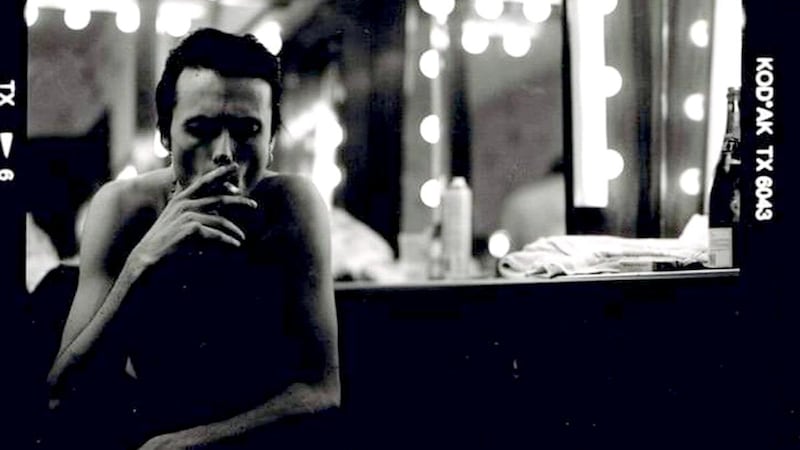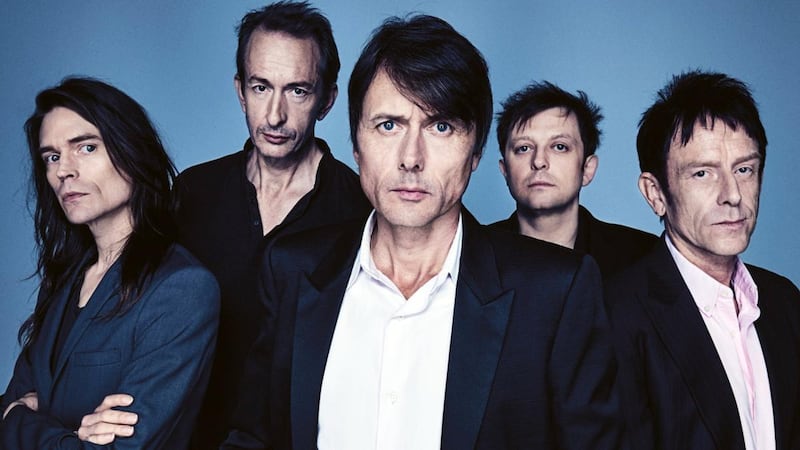Here he comes: the beautiful one, with the book in his hand he vowed never to write. It was inevitable. Those who read his first memoir, 2018’s Coal Black Mornings, the bildungsroman which so elegantly deconstructed the childhood, adolescence and ultimate creation of the artist, will understand why it was so irresistible for him; Brett Anderson is a poet who discovered songwriting first.
Renowned for lyrics that elevate the banal, bleak ephemera of ordinary life to something extraordinary, Anderson says he finds “the iconography of mundanity inspiring. I look at a chain link fence and see romance there.” On this occasion, he has taken something extraordinary – cultural superstardom – and made it uniquely ordinary with its grounded presentation.
Once he had embraced the opportunities that writing his own memoir gave him; reclaiming truth from the tabloids, re-evaluating perceived successes and failures, creating the official record of Suede’s history, and all with the precision prose and eclectic turns of phrase that were synonymous with his lyrics, he was destined to keep going.
The first book was written for his son so that he would know his father in a way that is profoundly difficult for most of us. This time around, the book exists because Anderson loved writing Coal Black Mornings so much. “I thought it was really interesting what I did with it,” he explains, “so I couldn’t resist picking at the scab, although I know the experience of publishing this book will be different because of the period of my life that it deals with.”
Charting the ascent of Suede in the 1990s through the halcyon moments of appearing on the cover of Melody Maker before ever releasing a single, to the gut-wrenching ultimate implosion of the band, Anderson doesn’t shy away from either the glorious or the gory. The book ends backstage at the Graham Norton show with the band splitting up; the perfect moment to close as Anderson is unafraid to hold failure up to the light. As he says, “Sometimes it’s not the sparkling moments that define us but the darker ones leading up to them.”
Absence of exploitation
And yet he manages to achieve something unique for the realm of rock biography; the book exhibits a total absence of exploitation of those that travelled within his orbit, avoiding any trace of gossip, blame or exposé. All the revelations are his own; the secrets just his to tell. As such he is dispirited in anticipation of the inevitable trawling through by some for salacious quotes to satisfy a greediness for controversy.
“I know that a gossipiness is going to be projected on to it and that every review will focus on Britpop even though the whole point of the book was to try to talk about something other than that,” he says. “It was slightly naive of me to think that I could write about these things in a more interesting way without it being dragged back to that agenda, but I hope when people read it they will understand what I was trying to do.”

In chapter one, Anderson explains his ambition was “to use elements of my own story as a way to reach out and reveal the broader picture, to look at my journey from struggle to success and to self-destruction and back again and use that narrative to talk about some of the forces that acted on me and to maybe uncover some sort of truth about the machinery that whirrs away, often unseen, especially by those on whom it is working, to create the bands that people hear on the radio.”
The result becomes a masterclass in understanding the emotional and practical infrastructure of the 1990s music industry. The micro level of Anderson’s unique personal experience is positioned within the macro in an illuminating and thought-provoking manner that contextualises their trajectory.
Amoral industry
“I was trying to look at myself as almost like a specimen,” he says. “The industry is completely amoral. It’s not deliberately trying to romanticise drugs or damage anyone but these things grow out of it. I was interested in understanding what the industry did to me, not by way of complaint, but more out of fascination with how it all worked.”
Reading Anderson’s account of the darkest days of his addiction is harrowing; it’s difficult to reconcile his past self with the refined, intellectual and incredibly warm gentleman waxing lyrical before me on a sunny September morning in his west London bolthole. More than anything, it is a relief that he survived.
The memoir manages to avoid, however, pandering to the cliches surrounding the drug-fuelled mythology of rock stars that Anderson admits being seduced by. Instead it raises questions about the consequences of mining your own self as the muse. If you become personally invested in the dangerous myths that surround creativity – so you must keep perpetuating behaviours that might destroy you in order to create – how do you ever break that cycle and find a new way to work?
Looking back now, Anderson acknowledges that “justifying indulgences is a function of that myth but you do learn that isn’t the only way to create and that you don’t need an external stimulus to generate ideas – that in fact it can have the opposite effect”.
The importance of tenacity within the creative process is a major, and refreshing, theme of the memoir. It is poignant to hear Anderson recount how a fear of returning to the poverty of his childhood drove him to persevere with the band when others might have surrendered. Although many would disagree, it’s clear that Anderson does not consider himself an artistic visionary but rather someone with a great work ethic.
“I was brought up in a very poor family, aware of the narrow limitations of my parents’ lives. Not wanting that for myself and my own family still drives me,” he explains. “A lot of great art has been created because of that fear and there’s nothing wrong with that. I don’t give up and I like how hard I work, that I keep throwing ideas together and in the jumble occasionally good things pop up.”
Press caricature
Anderson’s account of how his persona was curated by the media at the height of their celebrity is compelling. Although his essential self was always driving their creative decisions, the press created a caricature of him that he lost control of and resulted in three decades of a man bridging the gap between his authentic self and a stage persona.

“It wasn’t something I was conscious of doing at the time but I definitely made choices that fuelled it and the press exaggerated it further and ran with it,” he explains. For all music fans, and the Suede tribe in particular, the book offers these delicious insights into all aspects of the band; their image, songwriting craft, business decisions and relationships with the press. Did he feel any anxiety about stripping away that protective veneer now and allowing the fans and beyond to visit Oz and meet the wizard?
“There was definitely a fear that I might be undermining my own mystique to its detriment but I’m at the phase in my career where it doesn’t matter anymore. If I’d done this 15 or 20 years ago I think it would’ve affected how people see me but by now my image is too set. It doesn’t matter what else I do now or how many great records I make because I was most influential as an artist during a certain time and I can’t ever get away from the perception formed then. It’s galling, irritating, frustrating but I just have to accept that.”
In this, Anderson may not be right. This memoir has a profound capacity to alter the way music fans perceive the industry, their idols and the creative process – and to challenge any fixed ideas they may have about the man himself. In the wake of their eighth studio album, 2018’s The Blue Hour, and the incredible documentary, The Insatiable Ones, produced by Mike Christie that charts 25 years of the band, Anderson is experiencing a cultural renaissance that signifies him as an artist still in his prime. In the memoir he describes Suede as being like “a pram that’s been pushed down a hill” but his legions of fans will be relieved to hear it is finally parked up safely. For now, at least.
Afternoons with the Blinds Drawn is published by Little, Brown on October 3rd











